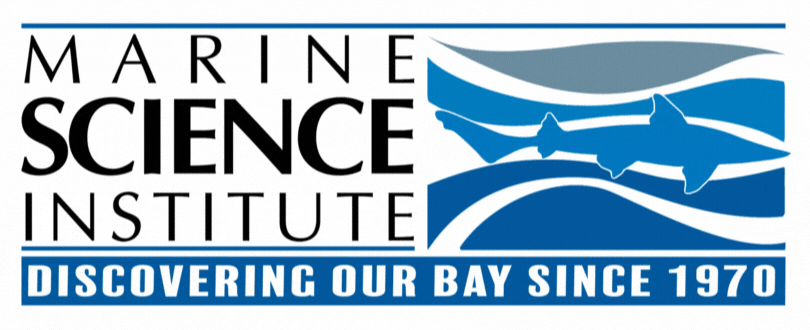
Not many know what lies beneath the water on the ocean floor, but 10 lucky kids got to find out on this week's edition of Marine Science Institute Afternoon Ecology! The San Francisco Bay is a very unique environment, surrounded by a variety of habitats and filled with species found no where else in the world! Salt marshes have historically lined the edges of the Bay, creating layers of specialized mud. These layers are formed by plants decomposing on top of one another, developing a dense (and smelly!) mud habitat. In comparison, the ocean is lined by sandy beaches. Sand is created by ongoing erosion of rocks on shorelines, combined with shells and volcanic material. Today's activities included sifting through mud and sand to determine what type of organisms live beneath the surface.
We began the afternoon by collecting a mud sample from below the dock. The kids worked together to drop and pull up the mud claw. It’s now time to get muddy! The kids sifted through the sample using their fingers to find creatures, organisms, rocks and shells. They shared their findings with the group, taking guesses at what they had found. Susie, the groups Science Instructor, recited the Mud Friends Pledge and they were all sworn in as protectors of the muddy creatures!
Back in the classroom, escaping the heat of the day, the kids had to draw their muddy friends in their notebook from memory! Making the connection to the food chain, we discussed the types of animals that feed in the mud.

Up next we moved out of the bay, under the Golden Gate Bridge, and out to the ocean! Figuratively of course. The kids once again had the chance to dig in their hands and examine the sand up close. They had a group discussion about what kinds of animals live above and below the sandy surfaces of the ocean. From the tiny crabs digging tunnels below the beach to large sea lions that sun bathe on beautiful days like today.
Often, sand contains a mineral called magnetite. It comes from volcanic minerals and lava particles, is black in color, and can be separated from other materials in sand using a magnet! Some beaches around the world appear to be entirely black because of the high magnetite content from nearby volcanoes. The kids got to test this out themselves with a magnet, collecting minuscule pieces of the black sand.
This week it was clear the kids were more comfortable with each other as well as us, the educators. They were more eager to participate and answer questions. I'm looking forward to seeing their growth and learning abilities!
Continuing up the food chain, next week we will be learning about invertebrates!





